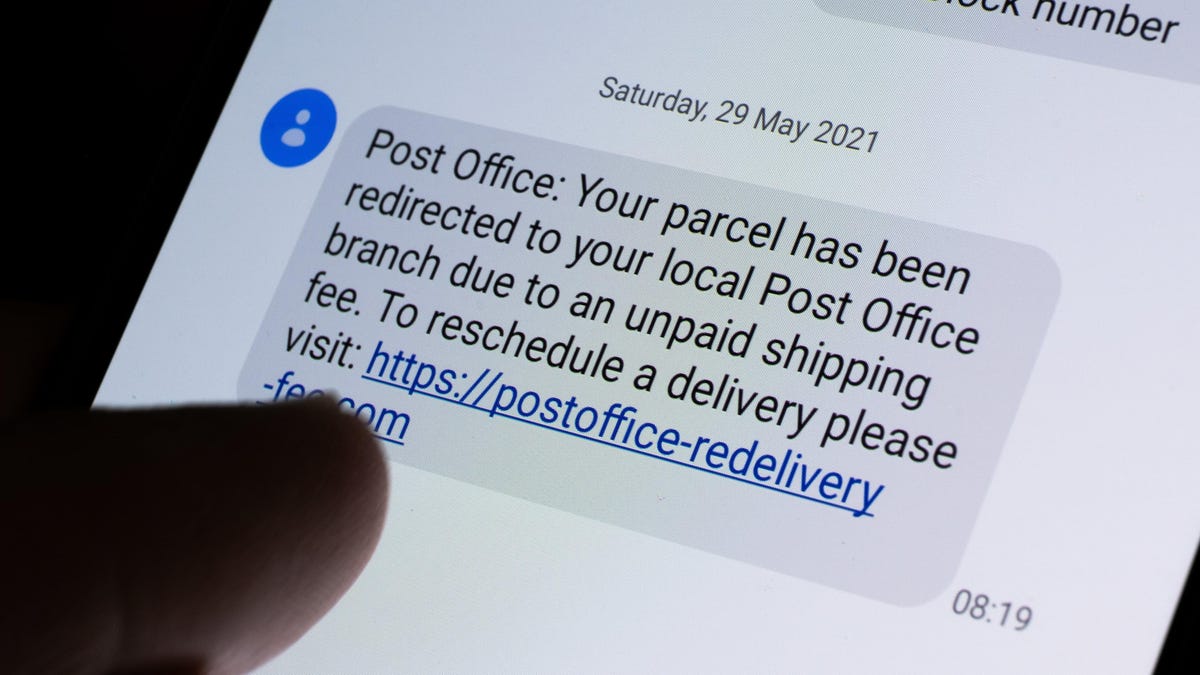
Consumerism today looks very different than it looked 10 years ago. Most people wouldn’t head out to a store to, say, buy a water bottle—they’d just order it on Amazon or some other online store. This means that many American households, at any given time, have at least one order pending delivery. Unfortunately, scammers use that fact to try to steal your sensitive information by sending you fake package delivery texts.
The Federal Trade Commission (FTC) reported that last year, the fake package delivery scam was one of the top-reported text message scams of 2022. Text scams cost Americans $330 million in losses that year, according to the FTC. Here’s what you need to know to stay safe.
How the fake package delivery scam works
Scammers will email or text victims impersonating the U.S. Postal Service, FedEx, or UPS about a fake delivery coming to your address with a “tracking link” that you are urged to click to update a delivery detail or select a payment preference, according to the Better Business Bureau (BBB).
If you follow the link, you’ll be asked for your personal information on a website, or you might download malware on your device that can steal your information, according to the Federal Communications Commission (FCC). Some scammers might try calling you or leaving you a voicemail with a call-back number to trick you into “verifying your payment method” over the phone. Some also ask you to pay some “tax” or “fee” before the delivery is sent.
How to know if a delivery text is legit or fake
The scam often asks you for some fee or personal information—that’s the best way to sniff them out. None of the official delivery options will ask you to give out personal or financial information over the phone. They might send you updates or let you know some status changes, but they already know who you are and where you live and already have your payment information on file.
Here are some tips from FedEx:
- Don’t reply to the sender who sent the suspicious messages and keep an eye out for misspellings in the website or email addresses, like fedx.com or fed-ex.com or exclamation points and excessive capitalizations in the message
- Always use their latest versions of the FedEx Mobile App to make sure you aren’t sent to fake websites.
- Report fraud to abuse@fedex.com, 1-800-GoFedEx or 1-800-463-3339.
Here are some tips from UPS:
- All UPS phone calls will come from 1-833-242-1931.
- Texts will come from 94601, 69877, 48515 or 52892.
- These are all the legitimate emails from UPS: accountconfirm@ups.com, mcinfo@ups.com, pkginfo@ups.com, customer-notifications@ups.com, auto-notify@ups.com, emailinfo@ups.com, invoice-notification@ups.com, donotreply@ups.com, ups@emails.ups.com, ups@upsemail.com UPSAdministrationSupport@ups.com, or no.reply@upsbilling.ups.com.
- Report fraudulent emails or texts at fraud@ups.com.
Here are some tips from USPS:
- Without clicking on the web link, copy the body of the suspicious text message and report it to spam@uspis.gov along with a screenshot, your name, phone number of the sender, and the date sent.
- Include relevant details in your email, like if you clicked the link, lost money, provided any personal information, or if your credit was impacted.
- Use USPS Text Tracking to monitor packages by texting 2USPS (28777) with your tracking number.
Here are some tips from Amazon:
- If Amazon sends you an email with an attachment, it should read “Attachments(s) protected by Amazon.”
- Legitimate Amazon websites will always have a dot before the “amazon.com” part, such as http://something.amazon.com. If you see an email with an IP address like this http://123.456.789.123/amazon.com, then it’s very likely a phishing attempt.
- If an Amazon service asks you to install software on your device, has grammatical errors, or has a forged email address that looks like it is from Amazon, then it’s most likely a scam.
- Amazon sometimes calls customers, but they will never ask you for sensitive or personal information over the phone or send you an unexpected refund.
If you do receive a text from a scammer, forward the text message to 7726 (SPAM). They will help your cellphone provider block these numbers from sending messages. You can also file a complaint with the FTC here. If you have been a victim of fake delivery text messages, file a report with your local law enforcement and the FBI’s Internet Crime Complaint Center here.

Comentarios recientes